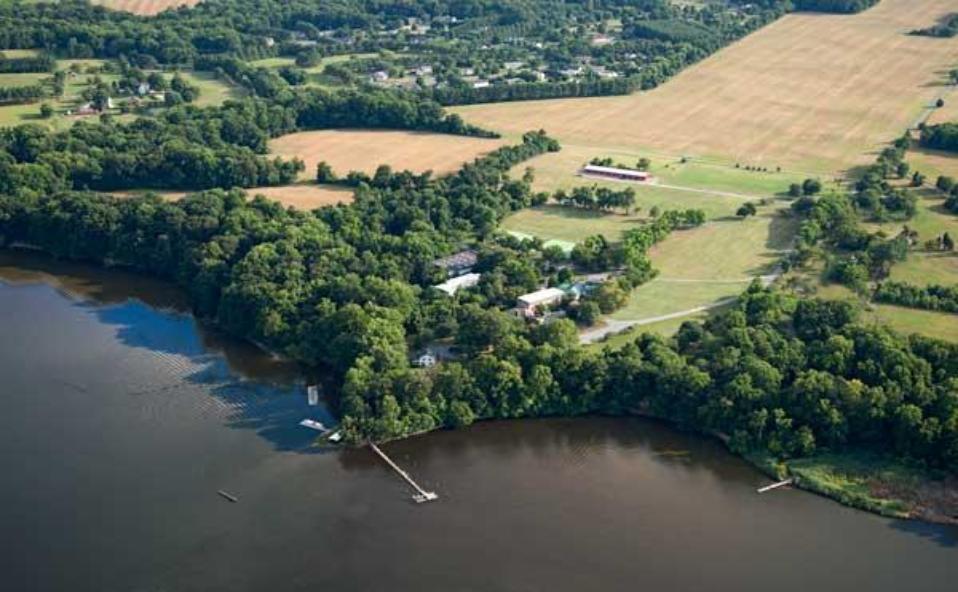After the spring’s crash course in distance learning, the faculty and staff at The Gunston School have spent the summer upping their game by exploring and mastering various new technologies and the creative possibilities they offer.
When not experimenting with how to integrate software—FlipGrid, Nearpod, Edpuzzle, Pear Deck, Quizlet, and others to name a few—Gunston’s faculty attended weekly virtual professional development with educational experts every Wednesday this summer. In addition, every faculty member is now Level 1 Google Educator Certified.
Some of the weekly topics discussed include leveraging mind-brain education strategies, integrating social-emotional learning, incorporating diversity, equity and inclusion in lesson plans, as well as thinking deeply about extended instructional time. Faculty members are also becoming Apple Teacher Certified, documenting their micro-credentialing process using individual Google Sites, which allow them to share their ideas, progress, and advice with each other.
Click on https://flipgrid.com/+
“Planning for teaching this fall feels a bit like packing for the study abroad program I did in Wales,” says Emily Beck, Director of the Chesapeake Watershed Semester and Environmental Programs, who currently also serves as the Director of Distance Learning and Co-chair of the Distance Learning Steering Team. “I knew I spoke the language, would be traveling with other students from Colgate University, and had a place to stay, but beyond that, so much was unknown to me. As I packed my bags, the piles grew higher and higher. Clothes for three seasons—hiking and trips to the city—sheets for my bed, camera, laptop, etc. My suitcase, dubbed ‘the body bag,’ was stuffed to the gills and probably earned an overweight baggage fee.”
In a way, Gunston’s faculty is doing the same thing—they’re packing their teaching plans with instruction for different scenarios, including shifting guidance from health professionals, and with attention to new and enduring student needs.
Music Department Chair and Performing Arts Teacher Jessica Newell created a distance learning music website for students using Google Sites, which included resources, a feedback form students could use to make suggestions or express a concern, and fun activities students could do online together such as Soundtrap, which offers collaborative music-making. Each student adds their own track, creating beats, and implementing effects.
In another project, Newell used Screencastify to make an instructional video to help students use the Music Map program to complete an assignment in which they navigate the world of music genres.
Watch video here:
https://www.youtube.com/watch?
“I’ve enjoyed adding all these new tools to my teaching toolbox,” says Newell, who attended a two-day virtual conference for Maryland Music educators. In addition, she attended the Association of Independent Maryland Schools (AIMS) Equity Playbook Workshop by the Wells Collective with several other members of faculty and administration. The workshops focused on how to create anti-racist curriculum and understanding school culture.
Dr. Sarah Lipchock, who teaches Chemistry has had her own YouTube Channel since 2015, when she developed and implemented a “flipped classroom.”
https://www.youtube.com/
“Using a flipped classroom model (where students watch video lectures as homework and do labs and problems in class) improved student outcomes,” explains Lipchock. In this video, she used the Notability App as a whiteboard during a synchronous Google Meet with chemistry students. “The whiteboard function allows me to talk through problems in the same way that I would in class, or in a tutoring session,” explains Lipchock, who edits students out of the recording sessions to protect privacy before adding to her YouTube channel.
https://www.youtube.com/watch?
Director of College Guidance Kellee Webb used Nearpod to bring her students up to speed about the rapidly changing college admissions process. “News was changing so frequently for juniors, who were understandably anxious about their college options this spring,” explains Webb. “I created this Nearpod of the most current information as it came in and students could post on the collaboration cork board and discuss their answers in a synchronous class.”
Over the course of the summer, Webb has attended the National Association of Independent Schools Diversity Leadership Institute in addition to a variety of workshops on anti-racist educational practices, bystander intervention and de-escalation training. “All of these are hot topics on university campuses. We would needlessly place our students at a distinct disadvantage if we didn’t discuss these issues before they head to college.”
Head of School John Lewis, who himself continues to teach a section of AP Government, shared, “In the face of these unprecedented circumstances, our teachers continue to rise to the challenges placed in front of us. As a teacher myself, I’ve also been deeply supported by our summer upskilling program, and I’ve grown more this summer as a teacher than in any other summer I can remember. Whatever the fall brings, I feel confident that we’ll be ready.”
In a rapidly changing world, Gunston is at the forefront of an educational renaissance, be it daily in-person instruction, distance learning, concurrent instruction, or a mixture of all three. As Roman Emperor Marcus Aurelius said, “The impediment to action advances action. What stands in the way becomes the way.”
Founded in 1911, The Gunston School is an independent, nonprofit, nonsectarian, coeducational, college preparatory high school located in Centreville, Maryland. Visit gunston.org for more information.
Don’t miss the latest! You can subscribe to The Talbot Spy‘s free Daily Intelligence Report here



Write a Letter to the Editor on this Article
We encourage readers to offer their point of view on this article by submitting the following form. Editing is sometimes necessary and is done at the discretion of the editorial staff.